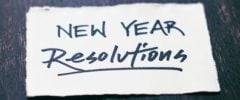How to Protect Your Interiorscape Business From Fraudulent Purchases

Everyone is vulnerable to scams, especially those frequently connected to electronic devices. To protect yourself and your interiorscape business from fraud, you must be proactive and learn how to recognize and prevent deceptive activity. Below, I share my experiences with fraudulent purchases along with how to identify them.
Lessons Learned
It’s been over two decades since I first encountered a fraudulent purchase while working in the sales department for a large commercial greenhouse. It started with a phone call for a large order of dish gardens totaling several thousand dollars. I felt excitement about the large order; however, it quickly became complicated. The buyer wanted the merchandise shipped overseas, but the freight cost had to be paid upfront by the greenhouse. He assured me he’d send a check to cover both the shipping and material costs. This should have been a major red flag, but I was young and naïve to this con. Thankfully, the owner realized this was a scam before being taken advantage of.
On another occasion, I received a text message from a potential customer asking for floral arrangements for his parents’ 50th anniversary. With a budget of six thousand dollars, I jumped on the opportunity and emailed three design choices, of which he picked the most expensive. Something felt a bit off at times, but I didn’t give it much thought. But when I asked how he wanted to pay, the nagging red flag in my head smacked me. He planned to send a check by email, requesting that I capture the image with my laptop and use my bank app to deposit it. This was clearly fraud, and the time it took away from legitimate business was aggravating.
Communication for the anniversary arrangements took place via text, email, and phone, leading me to believe it was a genuine sale. Previously, scammers kept it simple and vague—communication was only through email. I was likely targeted because I’m a smaller company. A six thousand dollar sale would be enough for me to let down my guard and accept the emailed check. I felt foolish once again, but realized scam artists go to extreme lengths to convince unsuspecting people.
How Can You Spot Fraudulent Purchases?
Fraudulent purchases have been around for decades. However, they’re difficult to spot as they usually start out like any other new customer order. The following are a few clues to look for:
- A fraudulent purchase typically comes from a buyer you’ve never dealt with before, ordering a product or service costing a significant amount, even in the thousands.
- The purchaser isn’t concerned with the quality, company reputation, or typical details a genuine client would ask about when spending a large dollar amount.
- The buyer requests the order immediately or in a hurry, or they may contact you persistently.
If you come across these warning signs when it’s time to process the payment during a new customer transaction, be wary:
- The customer asks your company to cover any of the cost, such as forwarding the shipping amount to them with the promise of repayment.
- The buyer offers unusual payment methods, such as emailing an image of a check for you to scan and submit.
BONUS: A small business owner I know lost a significant amount of merchandise from a one-time customer who had his credit card company rescind his Visa payment. Despite receiving his merchandise without his card information compromised, the buyer claimed the business didn’t use an updated encrypted chip system. He used this tactic to get thousands of dollars’ worth of free merchandise from several businesses. To avoid situations like this, ensure your company processes payments correctly.
Trust Your Instincts
No matter how wise you believe you are, nobody is immune to scammers. Don’t ignore that feeling when something doesn’t seem right. Now wiser to this trick, I hope my experiences will save someone else the aggravation of wasted time and money.
You May Also Like
Leave a Reply
You must be logged in to post a comment.




















